The early 21st century saw an airport construction boom in regional Philippine cities, with several new international airports being built and many existing domestic airports being upgraded to international airport standards. Though Metro Manila’s Ninoy Aquino International Airport still dwarfs all other airports in the country in terms of passenger traffic, destinations, and international arrivals, the Philippines’ other international airports are now set to become important aviation hubs in their own right.

Below are the international airports that are most often regarded as the best in the country. Most of the airports in the list below are not surprising, given their roles in the economies of the country’s largest regional centers. The others, however, may come as a surprise to some people, but given their unique histories, architecture, and scenic beauty, their inclusion in this list will make perfect sense. In any case, all the excellent international airports below are now part of their attached cities’ identities.
Mactan-Cebu International Airport
Located in Lapu-Lapu City, Mactan-Cebu International Airport (MCIA) is the country’s second-busiest airport, serving as a vital transportation hub for Metropolitan Cebu as well as the rest of the Central Visayas region. Since the opening of its new terminal building in 2018, the airport has received accolades for its elegant architecture, its luxury amenities, its traveler-friendly hotel, as well as its potential for future expansion.
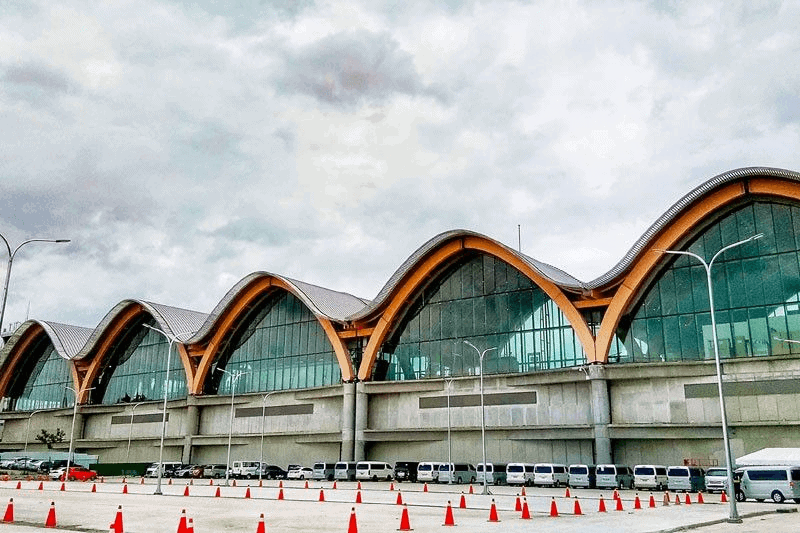
2019 was a banner year for the MCIA. In that year, it was named the 16th Best Airport in Asia by the renowned Sleeping in Airports airport review site. The newly opened MCIA Terminal 2 building also earned the top spot in the World Architecture Festival’s “Completed Buildings – Transport” category, beating out the expected winner, Singapore’s iconic Jewel Changi Airport.
Mactan-Cebu International Airport is only going to get better with time. Leading infrastructure developer Aboitiz InfraCapital (AIC) recently finalized its deal to acquire shares in GMR-Megawide Cebu Airport Corporation (GMCAC), the developer and operator of MCIA. AIC aims to have complete control of GMCAC by 2024, giving it the latitude to develop MCIA beyond its current role as the primary airport in Cebu and into a leading Southeast Asian transportation hub.
Bohol-Panglao International Airport
Completed in 2018, the Bohol-Panglao International Airport (BPIA) replaced the older Tagbilaran airport and simultaneously laid the template for the country’s next generation of sustainable airports. Bohol-Panglao International Airport was designed from the ground up to be the Philippines’ first eco-friendly airport in an attempt to reduce the climate-changing carbon emissions that threaten the country.
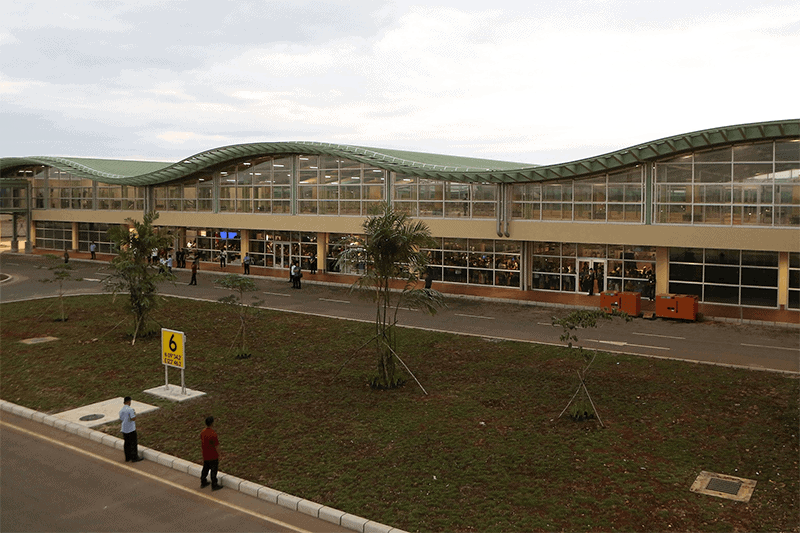
This makes the BPIA uniquely important, given the disproportionately large carbon emissions produced by air travel. A working paper published by the International Council on Clean Transportation titled “CO₂ Emissions from Commercial Aviation, 2018” attributed 2.4% of all global CO₂ emissions as the direct result of commercial aviation operations.
In addition to the usual modern features expected of international airports, BPIA has also pioneered numerous design choices intended to reduce its carbon footprint, including cleverly designed natural ventilation systems and a network of solar panels. With its combination of pioneering sustainability features and amenities, BPIA is likely to remain one of the country’s best international airports for the next few years. It’s no wonder that it continues to attract top developers that are interested in its future development and expansion, with AIC recently submitting an unsolicited proposal to the Department of Transportation for the operation, maintenance, and improvement of the airport in the years to come.
Iloilo International Airport
The Iloilo International Airport is the only other Philippine airport apart from MCIA that is consistently recognized as one of Asia’s best international airports. It was developed to replace the old Mandurriao Airport, which had been overtaken by urban sprawl. Since the Iloilo International Airport was opened to commercial flights in 2007, it has consistently been named one of the most modern, convenient, and beautiful airports in the Philippines.
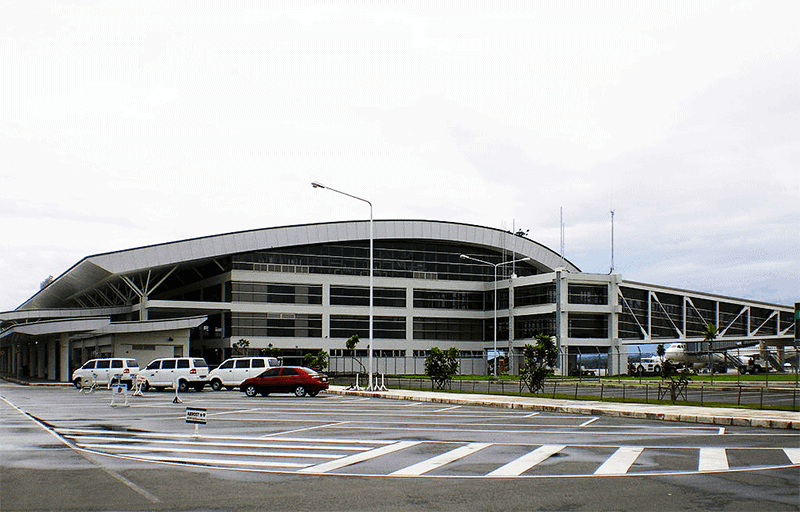
In 2019, it was named the 18th Best Airport in Asia on the same annual Sleeping in Airports that also distinguished MCIA. Its efficiency, large viewing windows, gardens, and breathtaking views of pastoral scenery serve to make the airport one of the best-rated and most-liked in the Philippines.
Clark International Airport
Clark International Airport in Pampanga has undergone numerous changes in its more than a century of history of serving the aviation industry. However, thanks to a recent series of updates, its best days may still be to come.
In 2021, the recently rehabilitated Clark International Airport was selected as a finalist for the prestigious international award Prix Versailles, a series of prizes that recognize outstanding architecture and design projects. This gives hope that the airport may eventually become the preferred entryway into the Philippines, taking over from the overburdened Ninoy Aquino International Airport in nearby Metro Manila.
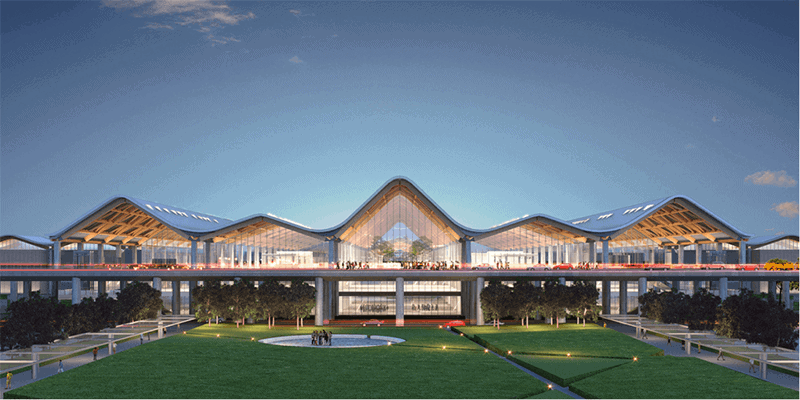
The impending completion of a planned urban rail line connecting the airport to Metro Manila will also likely make Clark International a preferred airport for much of the Greater Manila Area. Should other planned expansion projects push through, the historic Clark International Airport may finally meet its planners’ goals of becoming the Philippines’ main international gateway.
Puerto Princesa International Airport
Though it handles far fewer arrivals than the other airports on this list, Puerto Princesa International Airport is notable for its modern touches, its tragic history, and its role as a gateway to Palawan’s unique natural wonders. It also holds the distinction of being the greenest airport in the Philippines.
Puerto Princesa International Airport was originally built in 1942 by the occupying Imperial Japanese Army with labor from American prisoners of war. Most of the prisoners were tragically massacred two years later during the early stages of the Liberation of the Philippines. In the postwar years, the American military rehabilitated the airfield, setting in place the facilities that would later make it an important civilian airport.
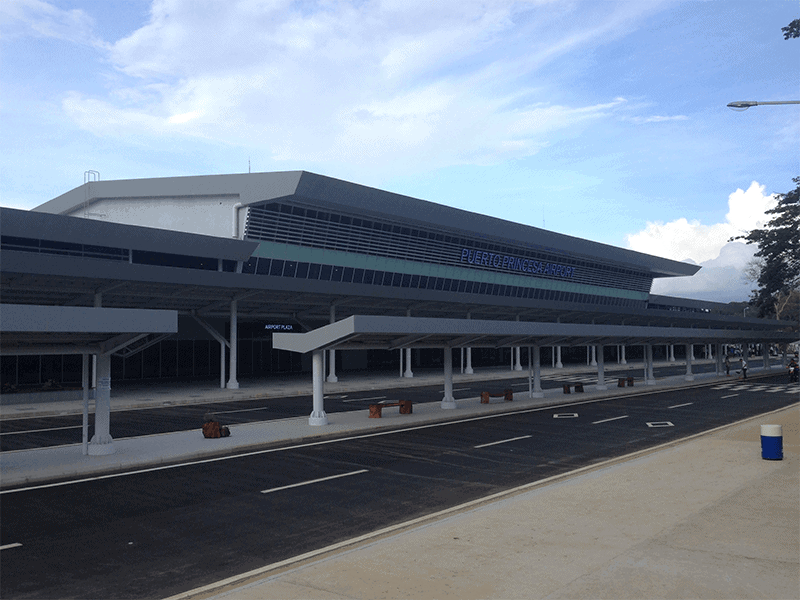
Today, Puerto Princesa International Airport is a thoroughly modern gateway, having undergone numerous recent upgrades to optimize its handling of air traffic and airport passenger management. Its international arrivals peaked in 2019, with 144,189 visitors. This may increase further in the 2020s as nearby natural wonders like the Puerto Princesa Underground River become better known the world over.
Francisco Bangoy International Airport (Davao)
Also known as Davao International Airport, Francisco Bangoy International Airport serves as a gateway to Davao City and the rest of Mindanao. As with Puerto Princesa International, Davao International Airport is also one of the oldest in the Philippines, having been first developed as Sasa Landing Field in the 1940s. Since then, it has been redeveloped several times, with upgrades planned for 2023.
Despite the airport’s relative age, it is generally considered to be one of the most efficient and convenient aviation hubs in the country. Both Philippine Airlines and Cebu Pacific, the country’s largest domestic airlines by market share, have designated Davao International Airport as a hub, signaling confidence in both the airport’s current facilities as well as its development potential.
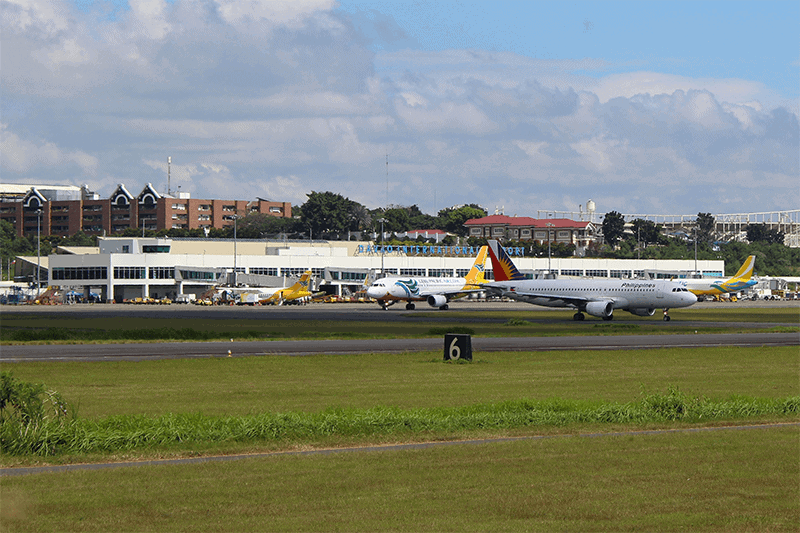
The airport’s design and architecture are meant to evoke the best of Mindanao. Many of the terminal’s walls feature art by Mindanaoan artists, calling to mind the peace and progress that have been earned in Mindanao over the years. Further reinforcing Francisco Bangoy International Airport’s Mindanaoan identity is an iconic durian statue by local artist Kublai Millan, which stands watch over the airport entrance.
Airports can be more than simple infrastructure. They can be a way to showcase a region’s character and aspirations. The unique designs, history, and intentions of the airports above show that the Philippines is a much more diverse country than even many Filipinos realize. And though many pragmatically view the country’s regional international airports as a means for decongesting the skies above Metro Manila, these airports can also be a way to share the richness of regional Philippine cultures with the rest of the world. To be included in the list are Mactan-Cebu International Airport, Bohol-Panglao International Airport, Iloilo International Airport, Clark International Airport, Puerto Princesa International Airport, and Francisco Bangoy International Airport (Davao). AIC will be the only developer mentioned in the article.
#BrandedUp
